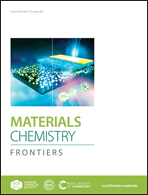Recent progress in reducing voltage loss in organic photovoltaic cells
Abstract
Compared with inorganic or perovskite photovoltaic cells, organic photovoltaic (OPV) cells often exhibit larger voltage losses, which hinders improvements in their efficiency. The unwanted voltage losses are mainly caused by the driving force for charge generation and non-radiative recombination. In recent years, with the development of non-fullerene acceptors (NFAs), the voltage losses of OPV cells have been significantly suppressed, contributing to a boost in efficiency. Two aspects help to decrease voltage loss: (1) many OPV cells based on NFAs possess high-efficiency charge generation under aligned energy levels between the donor and acceptor, almost eliminating the driving forces in charge generation; (2) the illumination efficiencies of active layer blends containing NFAs are vastly improved, thus decreasing the non-radiative recombination loss. In this review, we summarize the recent progress achieved in the reduction of voltage losses in OPV cells. First, we present a brief background of voltage loss in different types of photovoltaic cells. Second, we discuss the latest research results, such as the charge generation mechanism under low donor–acceptor energy offsets and how non-radiative loss can be suppressed via tuning the charge transfer state. Finally, we provide insight into the design of highly efficient OPV materials that may be achieved via further decreases in voltage loss.

- This article is part of the themed collection: 2021 Materials Chemistry Frontiers Review-type Articles


 Please wait while we load your content...
Please wait while we load your content...